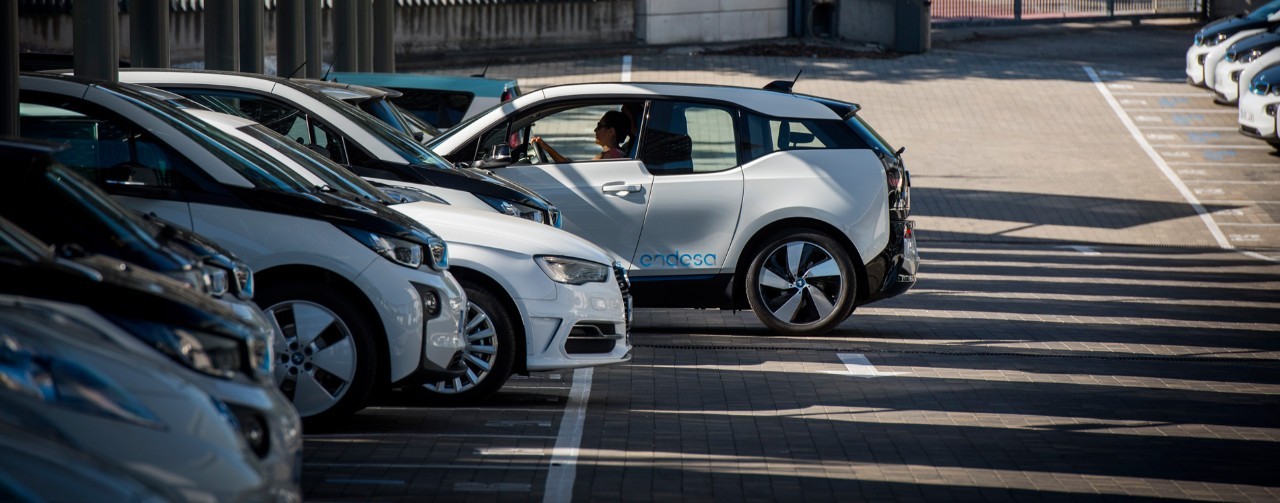
If you prefer to always view the website in English, please click here.
If you prefer to always view the website in English, please click here.
The CoordiNet project brings together European electricity carriers, distributors and consumers to design together the foundations of a more open, participatory and secure power system and take the first steps towards a unified European energy platform.
“The fluctuations in power generation and consumption flowing through the distribution networks will be increasingly unpredictable. The system will integrate a lot of renewable energies and battery use, self-consumption and electric vehicles will keep pushing hard.” Miguel Pardo, an expert in innovation projects related to energy distribution, describes how the electrical system is evolving.
Pardo participates in the CoordiNet project, an initiative led by e-distribution, Endesa's subsidiary for electrical infrastructures and networks, in which 23 companies and institutions from ten countries collaborate to lay the foundations for a new European energy platform. In this project, funded by the European Commission within the “Horizon 2020” programme, electricity carriers, distributors and consumers work together to define their new roles in an environment in which electricity flows will no longer be unidirectional (from the large generation plant to the consumer), but will become bidirectional.
What will the electricity generation of the future be like? It will be renewable, more variable, less predictable and more decentralised than traditional electricity generation. This requires greater flexibility to match supply and demand for electricity and to ensure that the power system works safely and efficiently from an economic and social point of view.
And how is power distribution evolving? Here is another important novelty: the increasing digitalisation of the power grid allows distributing not only energy but also data and information.
Through energy platforms that value the principles of circular economy, it will be possible to connect network operators, market agents and consumers to share resources that allow a more active and efficient management of the distribution network, transforming the distribution company into the electrical network system operator.
The technological innovations applied during the CoordiNet project will allow progress in monitoring enabling us to become aware of the generation and demand status connected to the distribution network.
This new scenario presents many challenges for all the agents involved in power generation, distribution and consumption. However, it is also a great opportunity to achieve a more active participation of consumers in electricity markets and take advantage of the flexibility that both they and small generators can bring to the system.
In Pardo's words, “CoordiNet's objective is to develop a much more open, participatory and safe electrical system, in which the different agents, whether they are distribution network operators, system operators or consumers, can contribute additional services to the power grid with their generation and consumption.
"The objective of CoordiNet is to develop a much more open, participatory and safe electrical system, in which different agents can contribute additional services to the power network with their generation and consumption."
– Miguel Pardo, responsible for innovation projects in e-distribution.
The consortium of companies participating in CoordiNet will develop three large-scale pilot projects in several locations across Spain, Greece and Sweden: Cádiz, Málaga, Murcia and Albacete in Spain, Cephalonia and Mesogeia in Greece and Uppsala, Malmö and Gotland in Sweden.
At these demonstration sites, power system flexibility services such as voltage regulation and the management of technical restrictions will be defined and promoted.
Companies and institutions participating in CoordiNet will define the requirements to be met by a unified European energy platform. Thanks to the circular approach of this project, the incorporation into the market of underused resources can generate value for their owners and for the system as a whole.
It is a commitment to the sustainability of the system. In Pardo's words, “the relationship between the project and sustainability is that, thanks to the implementation and facilitation of all these resources distributed throughout the network, we will become the system operator, maximising and optimising these resources for both the electrical system and for the different players.”
The solutions that are tried out in CoordiNet will allow us to take the first steps towards implementing important regulatory changes at the European level and in developing key technologies for the future of power distribution services.





.jpeg)